SIVGA QUE UTG: A Brilliant Variation of Que
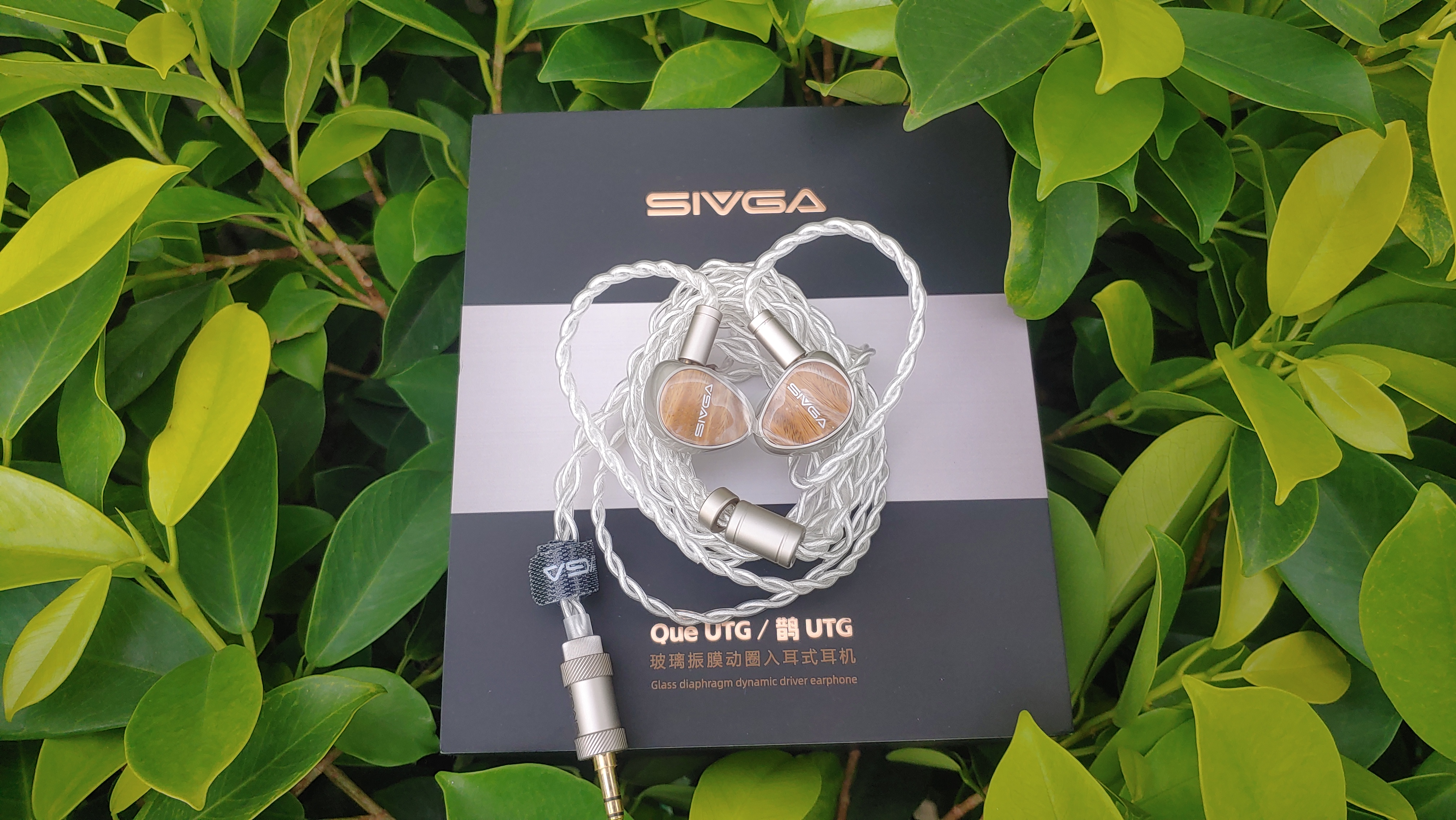
"Magpies or Xique in Chinese are type of avian species belongs to Corvidae family that makes them a relative to crows, jays and ravens, and these medium-size social birds are known for their striking neutral colours, graduated long tails and their distinctive loud, strident and cackling sound they produce either for warning or mating call. They are known for their exceptional intelligence for solving some problems by using some tools and photographic memories as they can recognise the exact location of their dwellings and remembering that humans that they interact with either by being fed or as a threat. Magpies have strong cultural significance in East Asian culture like China as a harbinger of good fortune and bliss to the people."

SIVGA as an audio company is known for its quality of its products, an active R&D that is supports manufacturing of its products that hold to its standards and an excellent customer service as these initiatives that it gain more trust from its customer and gaining some momentum in the audio market as they are among to be considered as a reliable. With the successful and positive feedback of their Que model that was released last year, they decided to create its next succeeding model but with some different features.
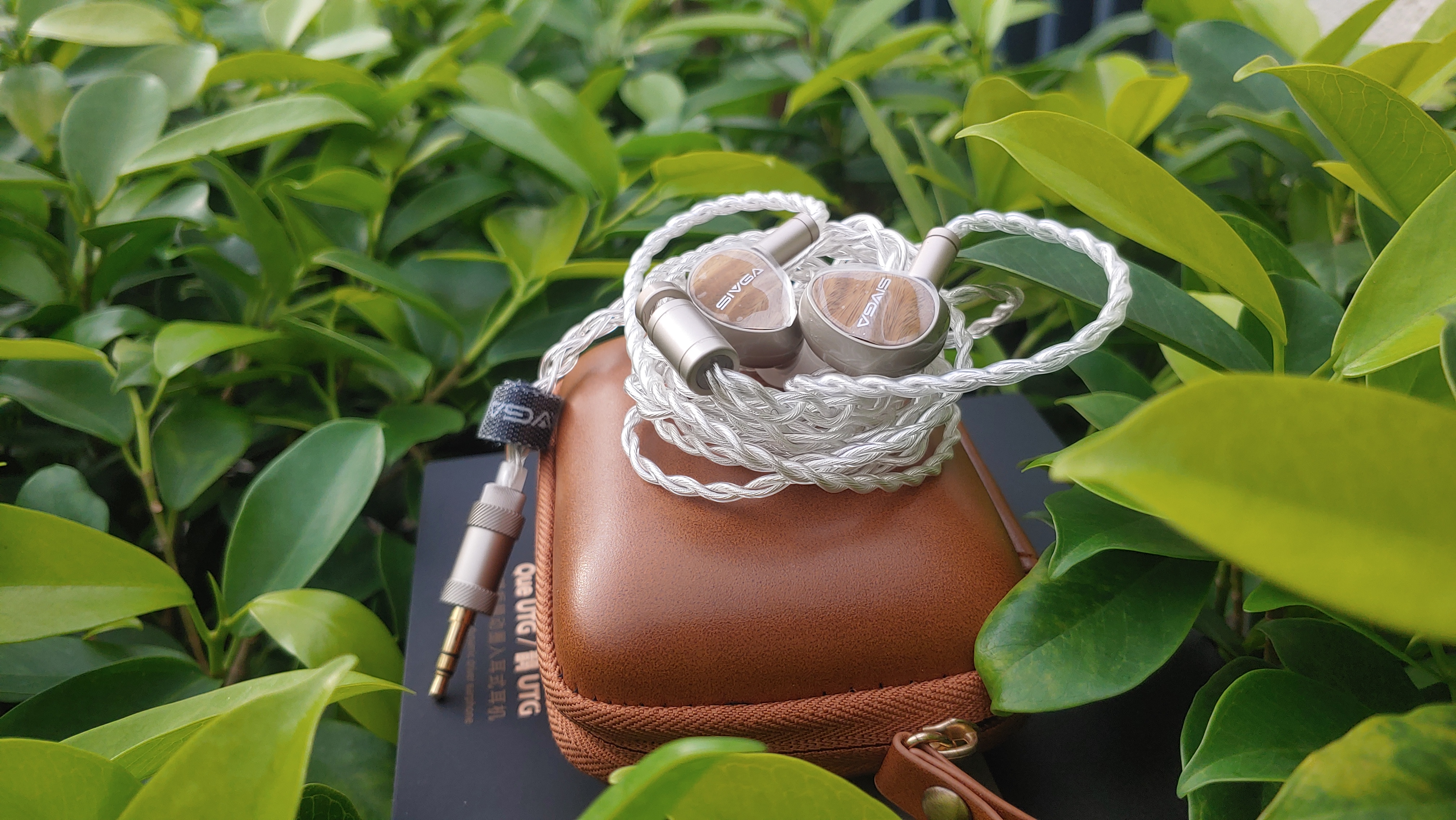
What I have here is the SIVGA Que UTG and like its precedent, it still has a single driver set-up but it has some new features that will separate itself from the original. The Que UTG utilises a a new type of dynamic driver, an imported ultra-thin flat glass diaphragm that was suspended into a PU (Polyurethane) membrane and with this composite dome, it has a smoother, more rigid yet elastic and has a thermal resistance on it overall properties will ensure a better transient response and enhanced treble detail as it will deliver a clear, detailed sound reproduction as it add depth, reverberations and slam on its bass, rich and smooth midrange and lively and detailed treble.
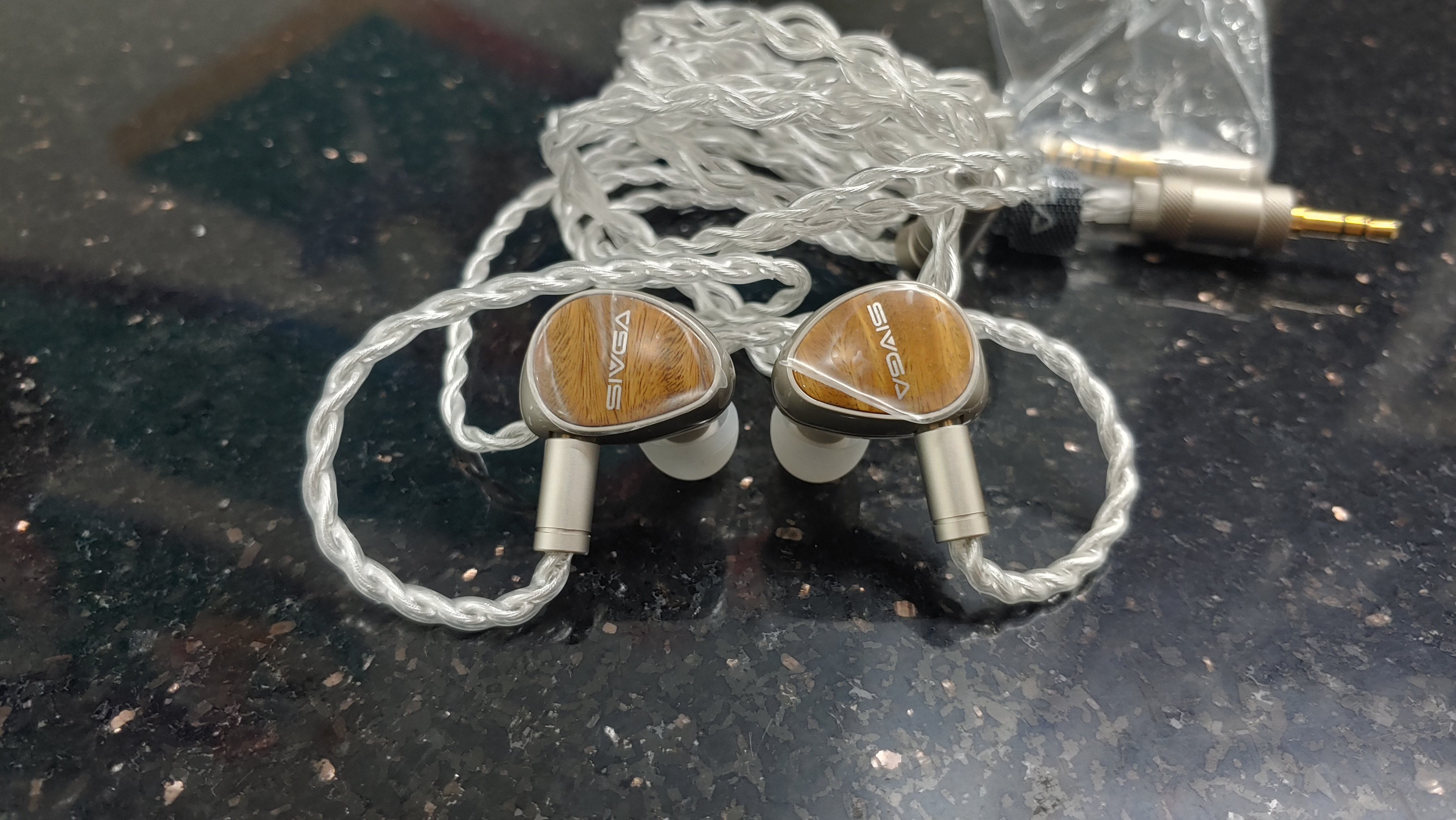
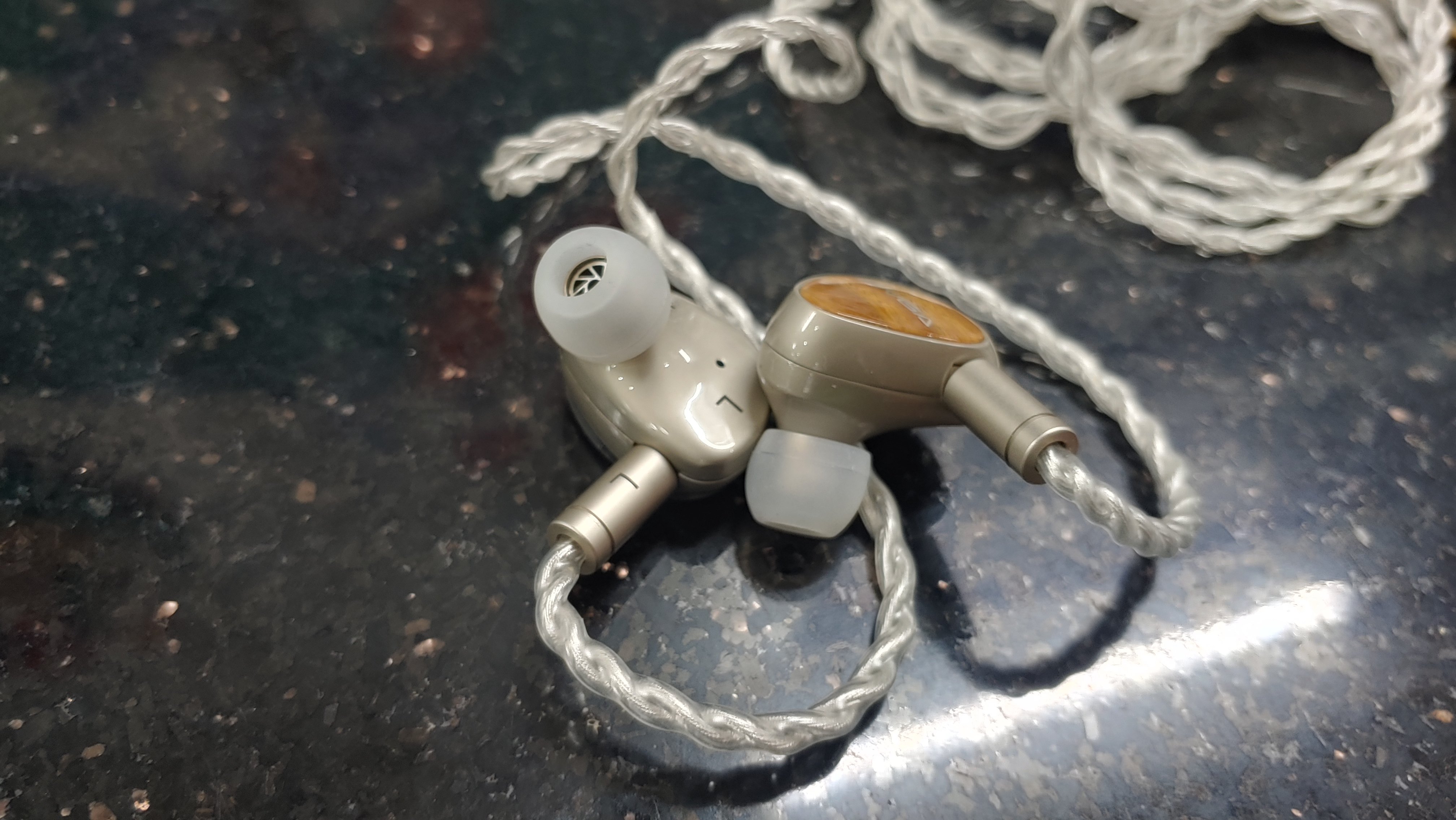
The driver is then encased in a well-crafted shell structure composed of zinc-alloy cavity base and a sandalwood faceplate panel that continues the design profile of the original Que. The shells have a fairly compact size with a solid build quality and a balanced weight on it for comfort that I will mention later on. There are two vent holes that were situated on its cavity base and on its wooden faceplate panel, there is a wood grain and each of the faceplate will have its own unique pattern, as we all know that wood are acoustically dense as it reduces unwanted vibration that makes them an ideal resonance dampener for a purer sound. Like the original Que, it still utilises a 0.78mm bi-pin connector as its interlocking mechanism for its detachable cable.
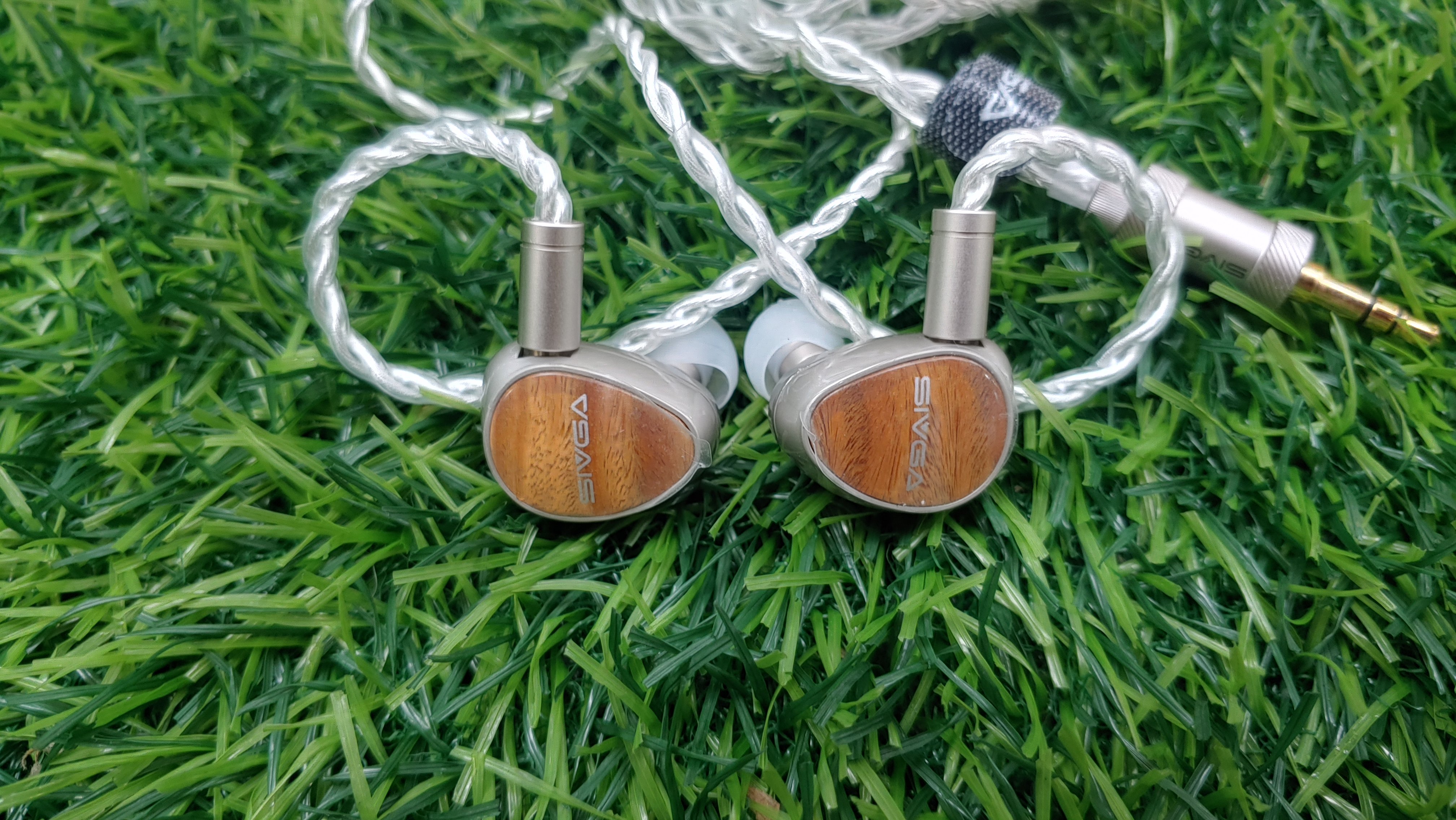
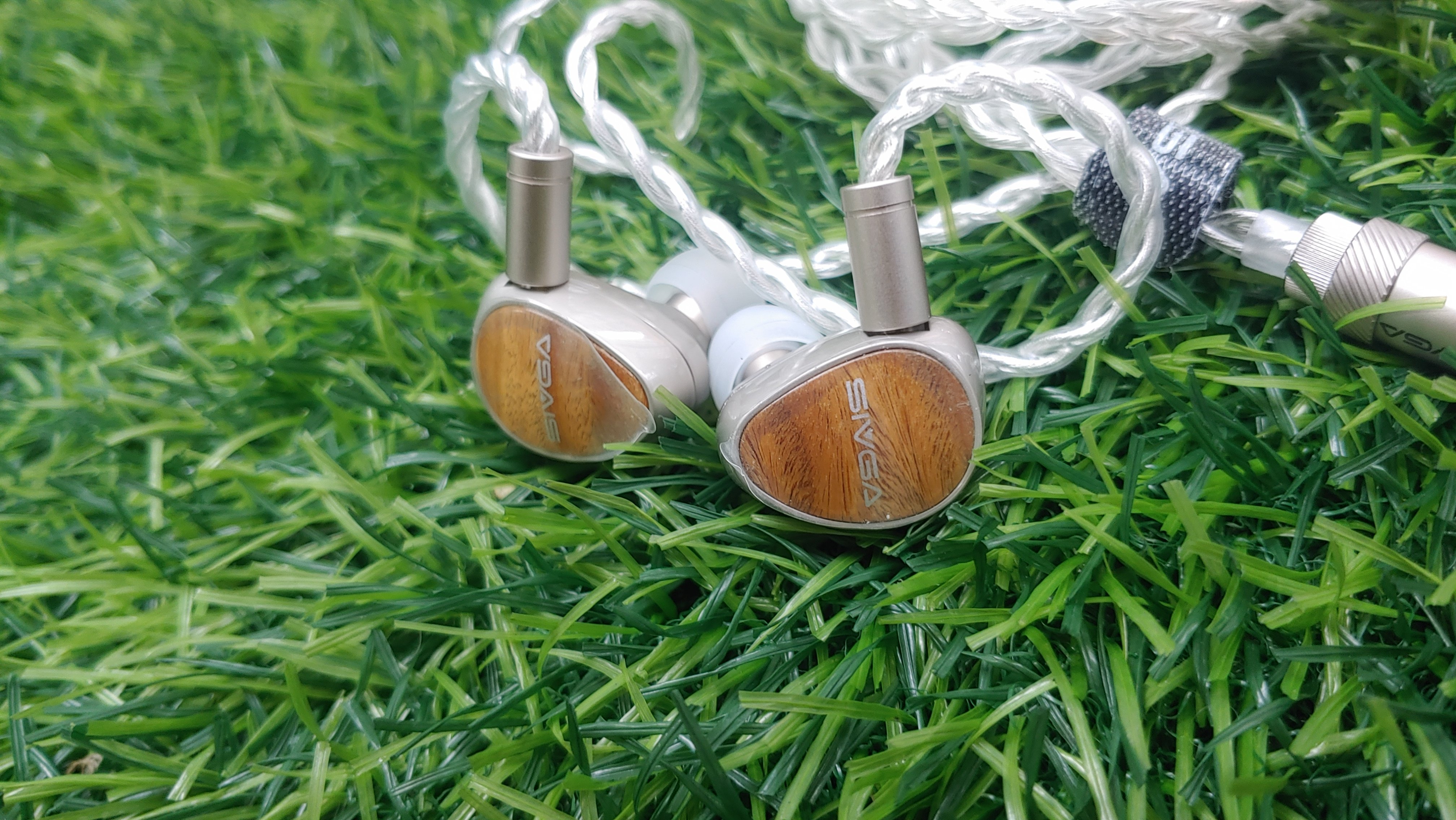
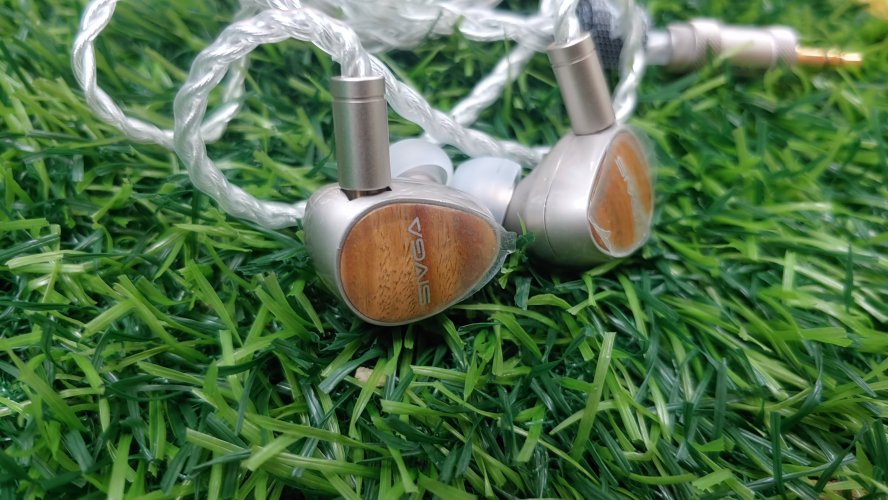
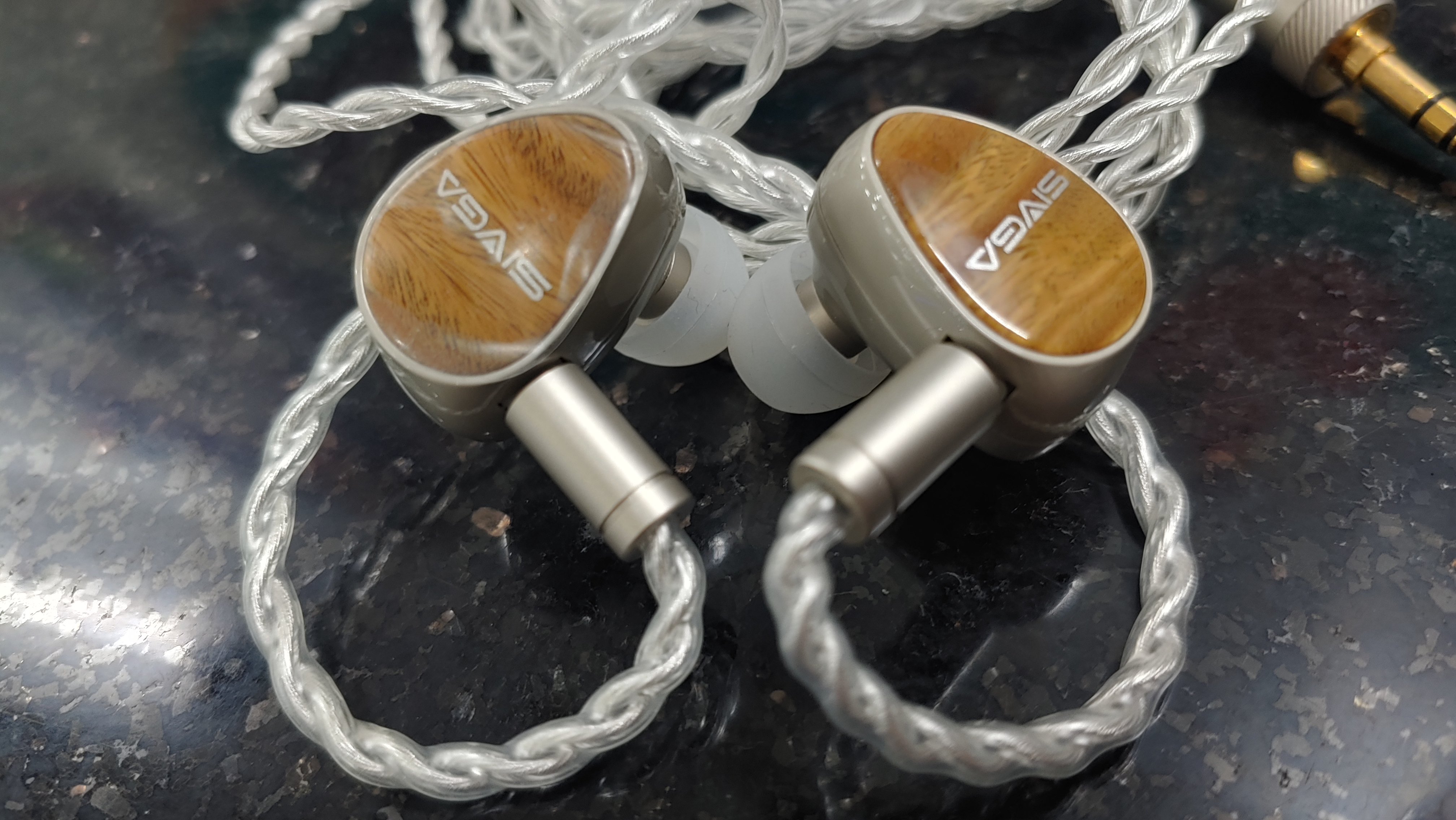
The wearability of this set is very comfortable as it fits well into my lugholes without any discomfort and wear fatigue at all. The nozzle part seems to seal securely into my ear canal as it gives a good passive noise isolation that was able to block some external noises from the outside surroundings.
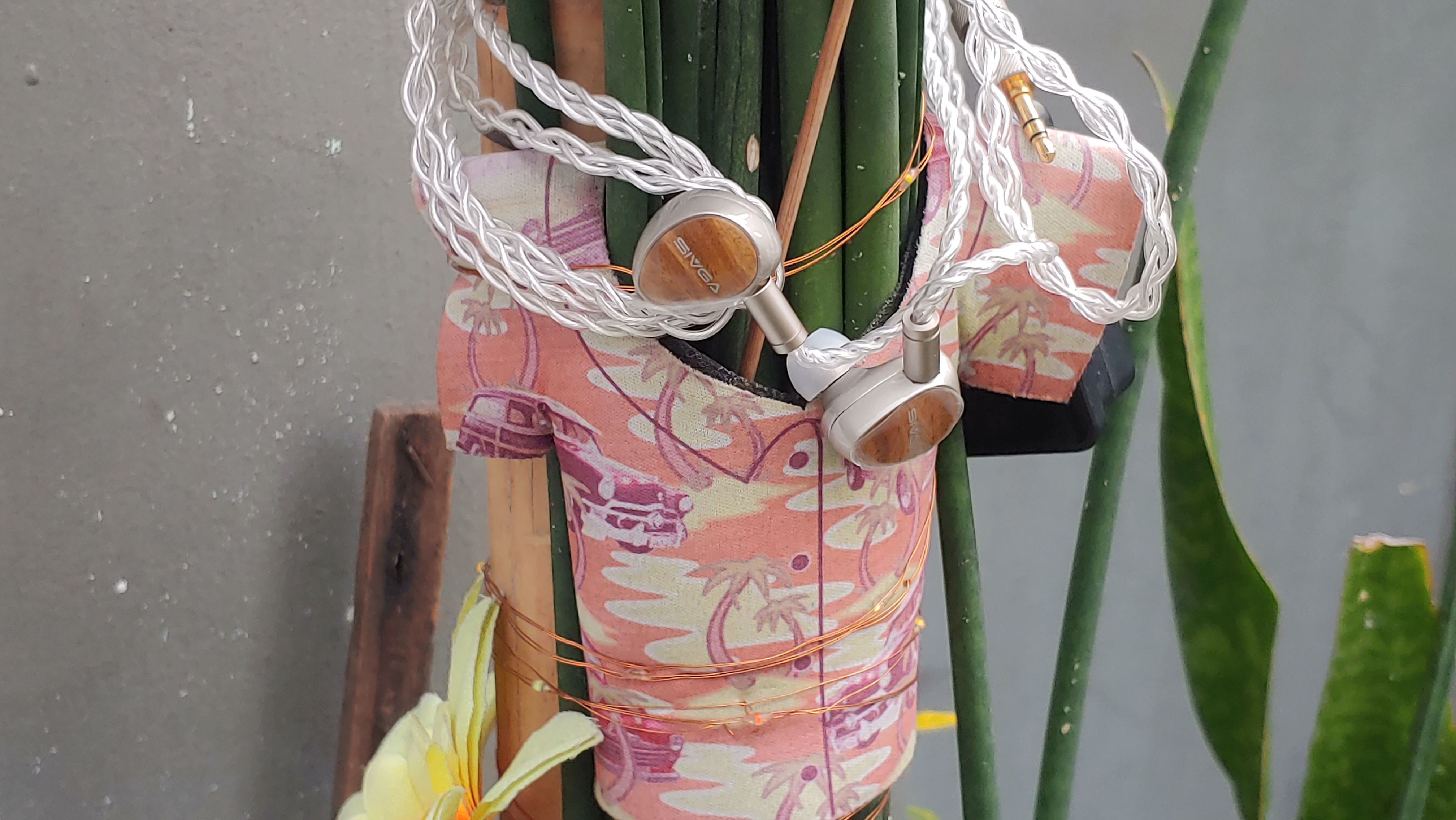
Regarding the stock cable that was part of Que UTG set, it is of an excellent quality beyond its price. It is fairly dense in composition, flexible and supple to touch and it also has a tangle-resistant. It was constructed in a 4-core in a Litz multi-wire structure composed of silver-plated OFC that were braided to provide a seamless lossless audio signal transmission for less distortion or eliminating microphonic feedback and it has also features a modular termination plug where you interchange it with either 3.5mm single-ended or 4.4mm balanced.
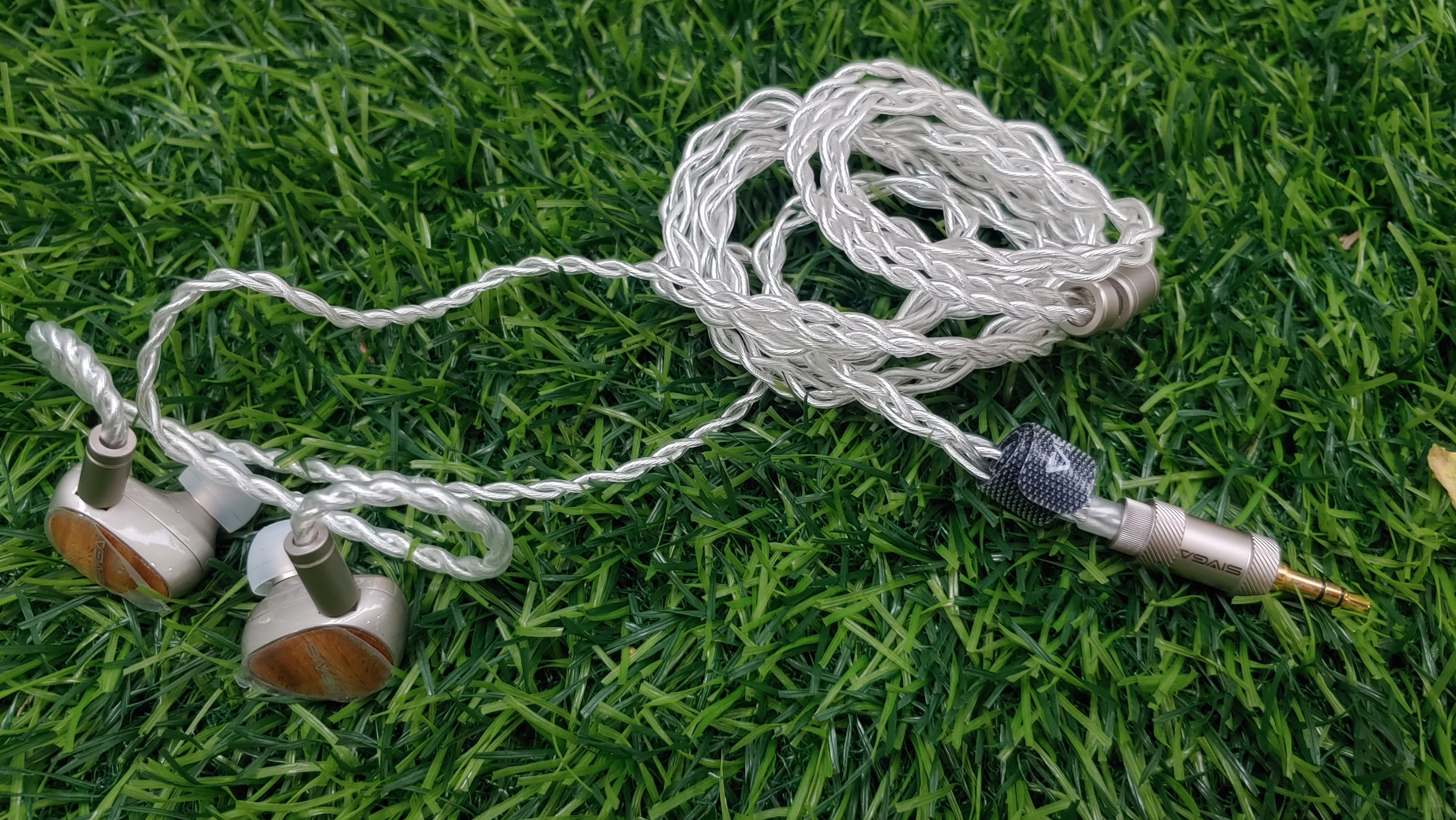
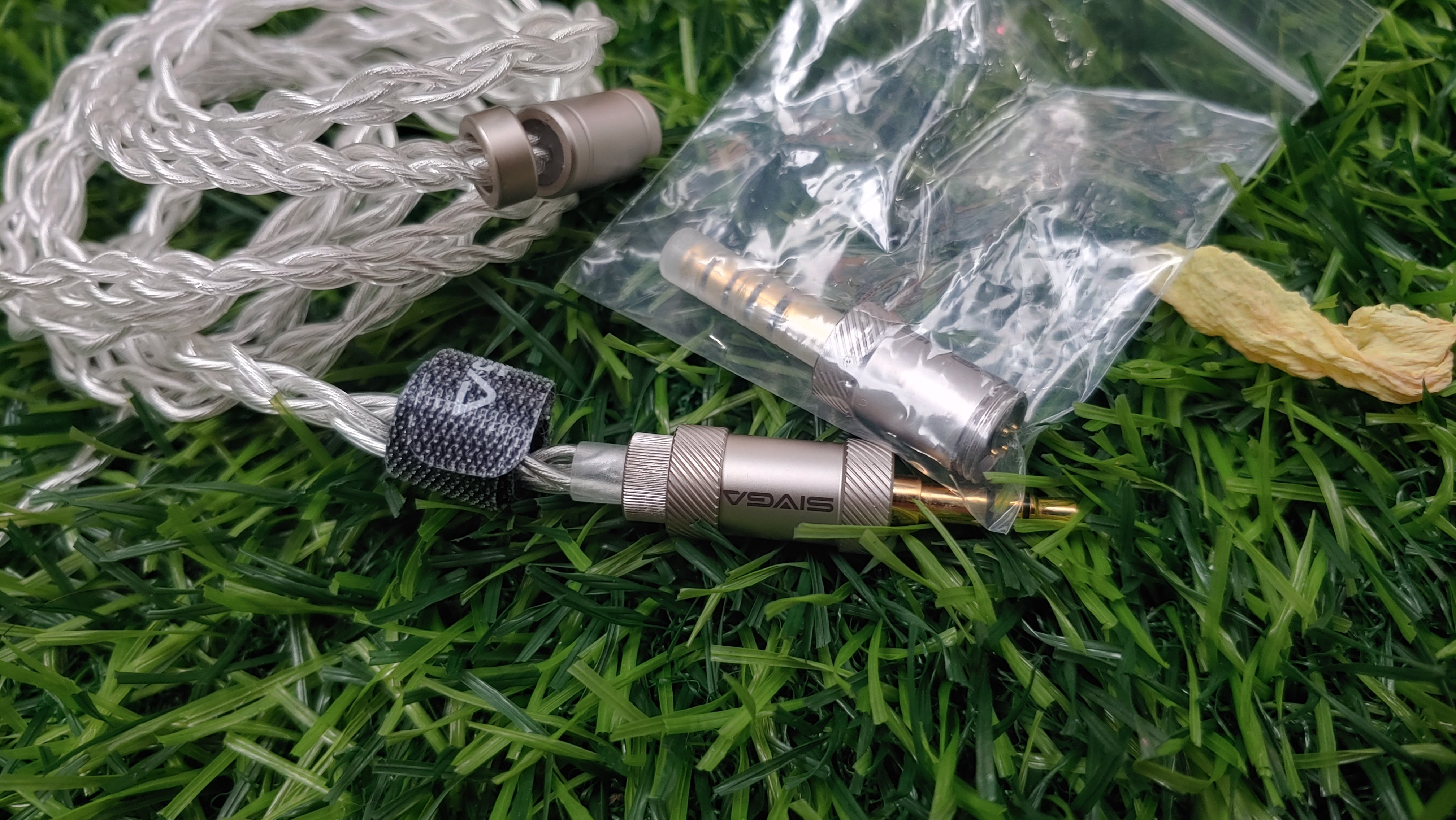
The product packaging of this one seems presented appropriately for its price and its contents inside were placed in an organised manner. There are a substantial amount of accessories that were included inside on its packaging box.
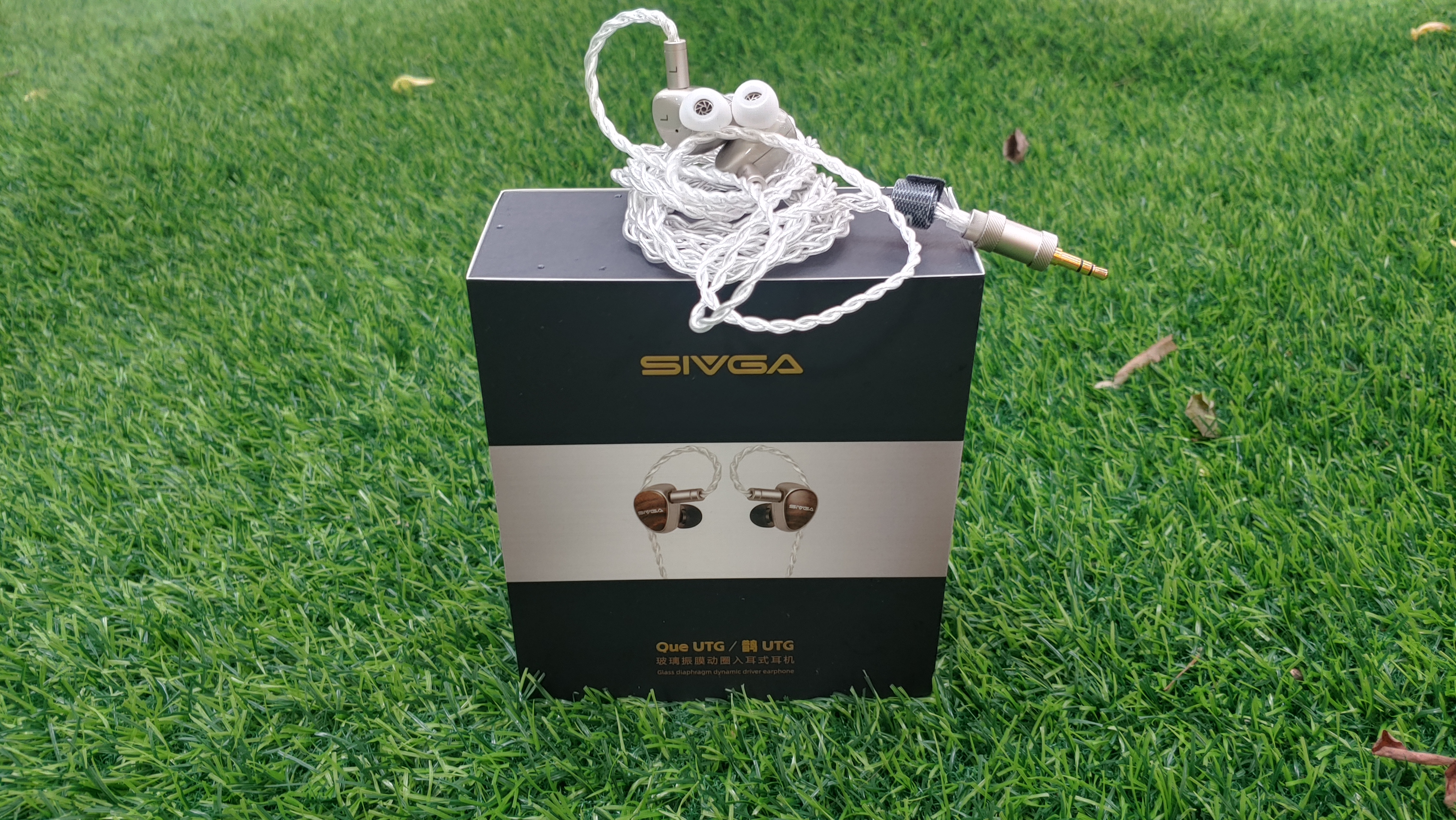
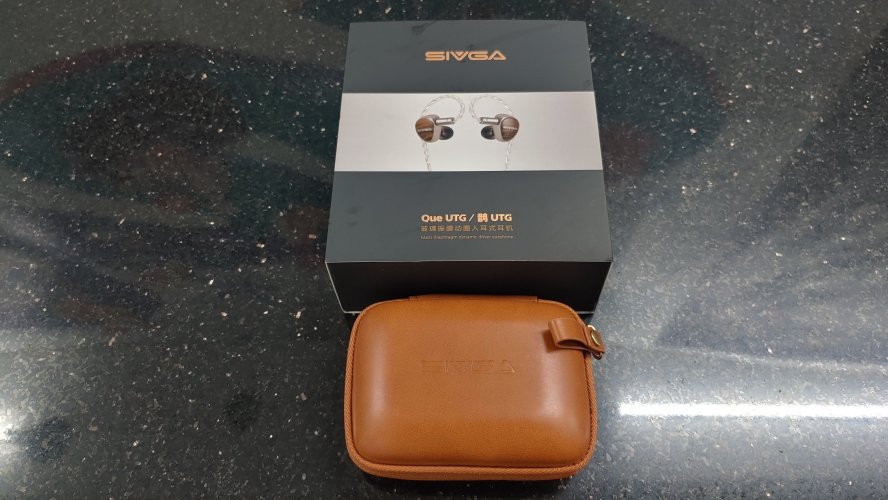
These are the contents that were included inside of its packaging box:
- Pair of SIVGA Que UTG transducer ear pieces
- Stock cable with modular termination
- 3.5mm single ended plug adapter
- 4.4mm balanced plug adapter
- Hardbound PU-leather storage case
- Three (3) pairs of black coloured balanced bore silicone ear tips in different standard sizes.
- Three (3) pairs of white coloured wide bore silicone ear tips in different standard sizes.
- User’s manual
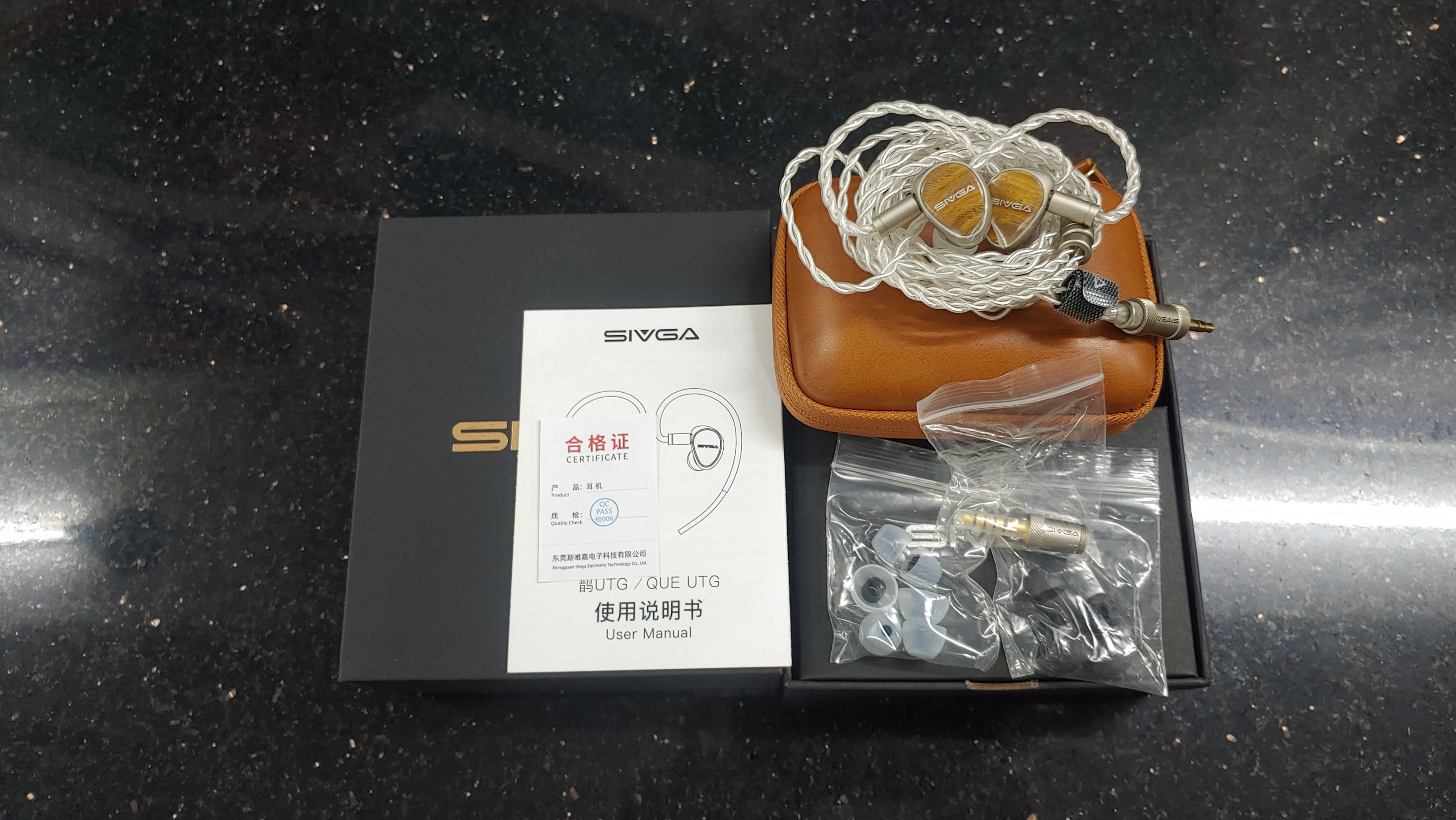
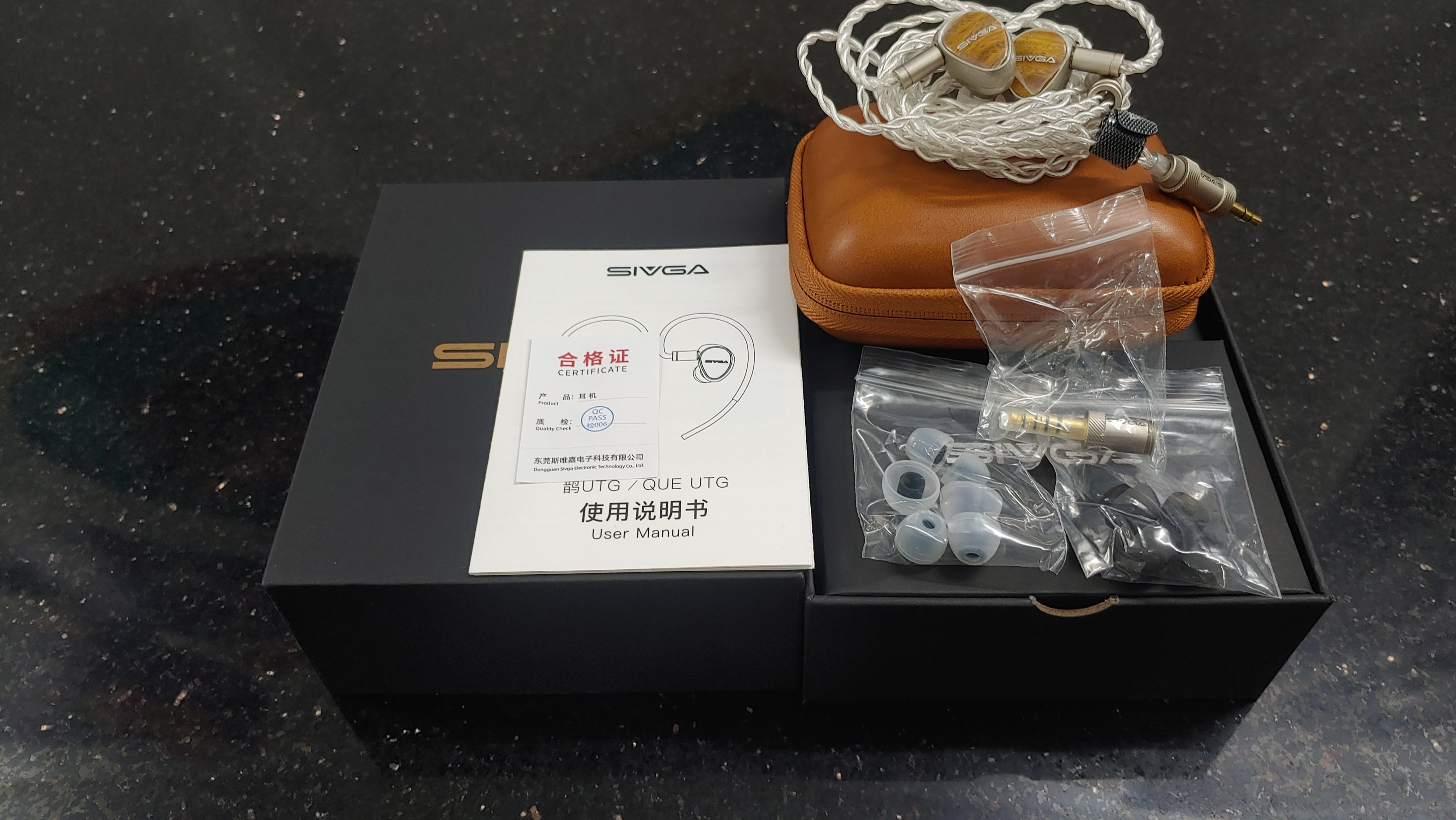
When it comes to driveability, the SIVGA Que UTG is evidently sensitive that it can be driven by device sources with a normal gain mode output with an optimal performance, but it can handle high gain output although make sure to turn the volume at zero level first. Even with a standard gain mode, this sound will sound pretty vibrant and fuller as it encompasses the whole frequency range.
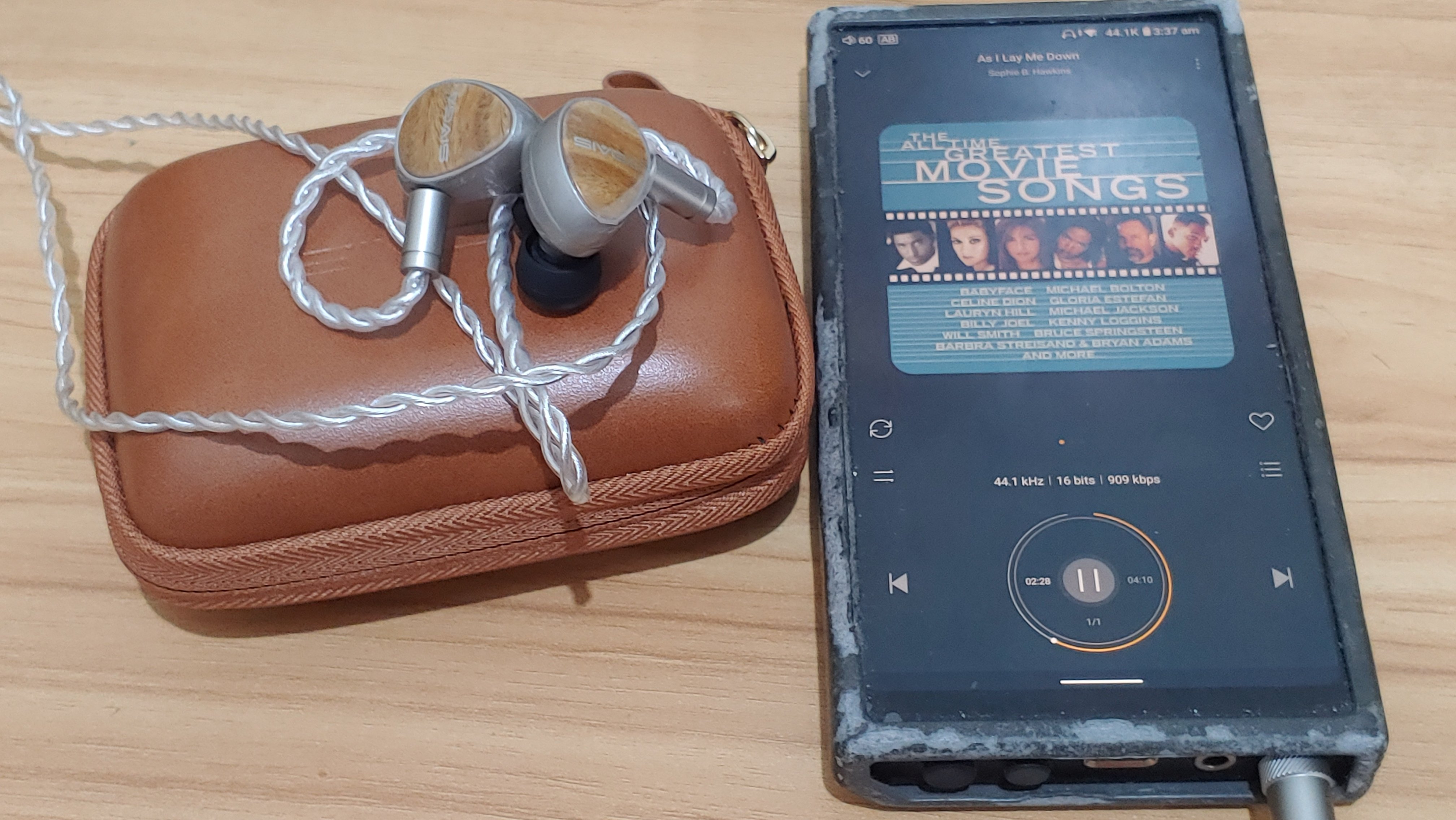
The SIVGA Que UTG has a slightly U-shaped sound profile with a bit brighter tuning on its balanced-warmish tonality. It has slight lift on the low frequencies, more balanced midrange as it has warmth and energy at the same time, and a more pronounced high frequencies.
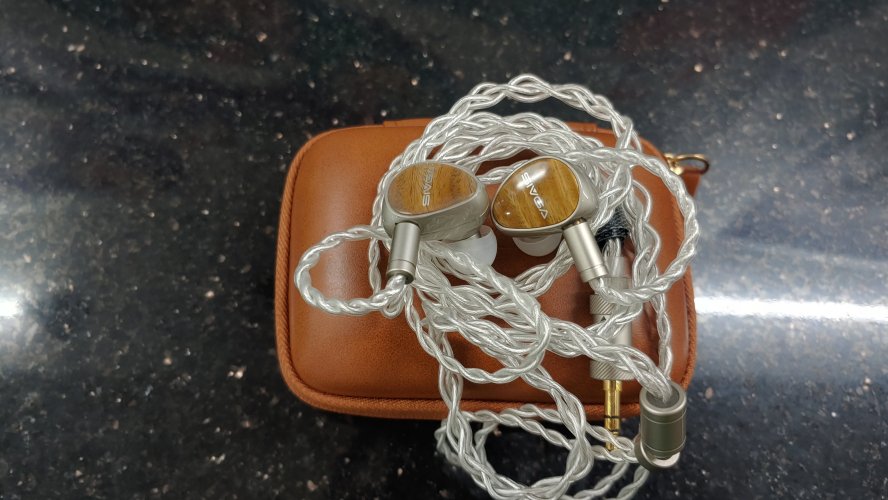
LOWS/BASS:
My first initial impression on what I heard is that its bass quality is still the same – a more sub bass- focused tuning on its low frequency but its mid bass still has an ample body as it still delivers a slam and impact. The sub bass reverberation is clearly felt that was generated from synthesisers, drum machines, bass guitars and double-basses, and also on vocal/delay tails of some male vocals.
The mid bass in which I mentioned before has an ample body and presence for the note weight on some bass-clef instruments and also on male vocals albeit they are on a more mellow and lighter side of the bass tuning. The bass guitars have a bit weightless and resonant sound while double-basses have a more raspy sound yet it has that hollowness on it and bass then, kick drums have that resonant and sustaining sound every stroke. Meanwhile, on the male vocal, bass and baritones have a deep resonance from their vocals, but it is also noticeable that they are lacking volume and dark tone to give that dense and dusky sound that these vocals should have. The overall bass presentation of this set is that it has a tighter, incisive and rumbly sound that make it a more cleaner presentation across the frequency range.
MIDRANGE:
The midrange of the Que UTG is somewhat a bit recessed on its presentation but it has a tad of warmth as it gives an enough vocal texture on the male vocals and some instruments not to sound too sterile that it subdues their natural tonal character on them. Another characteristic of this particular frequency section is that it has a vibrant and engaging sound with some transparency that is quite ideal on female vocals, and also on string and woodwind instruments to sound more open and energetic.
Male vocals on this one, while it has a smooth and clearness on some vocal types, like lighter and mellower sound of the baritones which makes them more ideal to the light and lyric ones, the bright, ringy and juicy sound of tenors and a delicate and bolder sound of countertenors. On female vocals, due to its energetic tuning it gives more fiery and a bit metallic edginess on mezzo-sopranos and silvery and shimmering sound from sopranos in which lyric and coloratura types will fare better to show more expressive and intensity from their respective vocals, but on contraltos, which they sound somehow rich but it lacks of the depth and volume that this vocal type should have.
On instruments, strings and woodwinds will be more highlighted on this one as guitars have a crisp and lingering sound, violins have a lively and clear sound, cellos have lustrous and a bit incisive sound, piccolos sound bright and penetrating, concert flutes have graceful and airy sound, clarinets have a mild and pale sound, and lastly, the saxophones sound more reedy and thin. The brass ones like the trumpets, trombones and horns, they sound vivid, brilliant and intense respectively, while on percussive instruments, on every strokes that they snares drums sound sharp and bright, tom-toms have resonant and sustaining sound, field drums have a sonorous sound and kettledrums have a resonant and a bit dry sound. The pianos have these sweet, vibrant and crisp sounds on them that makes them more mesmerising and soothing to listen to.
HIGHS/TREBLE:
The treble response of this one is definitely on the brighter side on how shimmering and lively the sound that it has. It has an accentuated upper-mids and presence section that sharpens the clarity and definition on the vocal articulation and attack on instruments but are some slight concerns that I should address particularly on treble-sensitives as its tuning might be unbearable within their hearing threshold and also, it has some instances of tinny, shrilly and a bit piercing sound on some tracks that I've tested but I don't still consider as harsh sounding in my opinion.
The brilliance section of this one has a good airy presence for a dynamic driver with an intense sparkle that affects the tonal colours of treble-clef instruments. Cymbals have bright and sizzling sound while hi-hats have a shortened sharp and sustaining sound, glockenspiels on either mallet or keyboard-type, have a brilliant and glistening sound and celestas have a silvery and bell-like sound.
SOUNDSTAGE, IMAGING & OTHER TECHNICALITIES:
In regards to its overall technical capabilities, this set is capable to project a fairly roomy head stage as I perceived the wideness of its lateral span, good height reach and depth and it projects that fairly segmented soundscape with good separation of musical elements as it presents a concave-like stereo imaging in which I was able to panned out its exact place placement of instruments and vocals within its sonic dimensions.
Another thing that I was also impressed of SIVGA Que UTG was its driver coherency as it is really responsive to deliver a fast transient response and its efficiency that it only require a small amount of power to produce a rapid motion thru back and forth as it pushes out the air that will produce a coherent and balanced sound. Its resolution capabilities of this set also quite commendable as its macro-dynamics is firm that it was able contrast the varying degree of loudness on chorale passage and instrumental lines from quite to loud level, and its micro-dynamic feature that it has sharp definition that is capable on retrieving details, nuances and grains from an audio track like notation textures, vocal ends and instrumental reverb tails.
PEER COMPARISONS:
SIVGA QUE
- The predecessor of the Que UTG and it also has a single driver set–up IEM.
- It uses a beryllium-coated diaphragm on its 10mm dynamic driver.
- It also has a composite shell structure made of wood and metal alloy with 0.78mm bi-pin connector.
- It is also well-accessorised and among its inclusions, it has a stock cable which I think is more of a premium quality but it doesn't have a modular termination feature.
- It has a U-shaped sound signature albeit that it has a more punchy bass, a fuller and warmer midrange but it has a bit less brighter treble intensity compared to the Que UTG.
- On its technical performance, it also has fairly spacious sound with better depth and it has a more solid macro-dynamics but it has a bit less sharper definition on its micro-detail retrieval compared to Que UTG.
SIMGOT EA500LM
- The next reiteration of the highly successful EA500 model but with different driver components and like the Que UTG, it also has a single driver set-up.
- It uses a composite diaphragm on its dynamic driver and it is made of lithium -magnesium alloy.
- The transducer was then housed in a solid aluminium alloy and it has detachable tuning filter nozzles.
- On its product packaging, it only includes one type of ear tips which is a balanced bore one and its stock cable isn't on par with Que UTG’s cable in terms of overall quality.
- Since it has detachable nozzles, it offers three tuning profiles and all of them are in a U-shaped sound signature and if I’m using a tuning filter nozzle with bright tonality, it has an even tighter and a bit hollowed midrange with more sub bass presence, a more recessed and even leaner midrange presentation and a similar bright treble intensity if compared to Que UTG.
- As for its overall technical performance, it has a bit smaller and intimate soundstage but it has similar resolution capabilities with the Que UTG which is also very detailed on both macro-dynamics and micro-dynamics.
KEFINE KLEAN
- A model which is an older cousin of Que UTG as KEFINE and SIVGA are actually sister companies and it also has a single driver set-up.
- It utilises a dynamic driver with a DLC diaphragm which is also quite reliable on driver performance.
- It has an aluminium alloy shell chassis that houses its dynamic driver and like the SIMGOT EA500LM, it also has a detachable tuning filter nozzle.
- It also has a fairly packed with accessories inside of its packaging box although it only includes one type of ear tips and its stock cable isn't even on par with Que UTG in terms of quality and functionality.
- Since it has interchangeable nozzles, it offers two types of sound profiles – a U-shaped with balanced-warmish tonality and a brighter tonality of similar tuning curve, and if I compared it to Que UTG with its latter setting, it still has a more punchy bass but it has more recessed and bit leaner midrange presentation and similar treble tuning but it has a less airy extension.
- On technical performance, it has a middling size soundstage presentation but it has more solid macro-dynamics in terms of presence with a less sharper definition on its micro-detail retrieval.
As I concluded this product review, it seems that SIGVA is striding once again on how they deliver a well-rounded model that putting the Que series on more noticeable exposure in the audio community as they still committed on pursuing high fidelity in a more reasonable price along with its wood craftsmanship that they also implemented here from their headphone line-up. The new ultra glass material on its dynamic driver has a strong potential that due to its excellent resistance from elastic deformation and bending, it will deliver a consistent transient response from its membrane with longer longevity in terms of wear and tear compared from other traditional diaphragm materials, and also it actually closer to a planar magnetic driver in terms of coherency but with less power output requirement.
Another thing that this set makes it appealing is the inclusion of a stock cable with good quality construction and even modular termination plug for audio analogue output versatility without resorting to swap with another cable due to termination plug incompatibility. As its tonality, it has a quite refined sound quality with a balanced and cohesiveness of its coloured musicality tuning as it somehow more focused on its clarity and detail that makes it more sonically pleasing especially to ardent treble heads.
The SIVGA QUE UTG is now available on online stores, I just provide some links below, Non-affiliated links guaranteed.
▶▶ SIVGA OFFICIAL STORE - ALIEXPRESS ◀◀
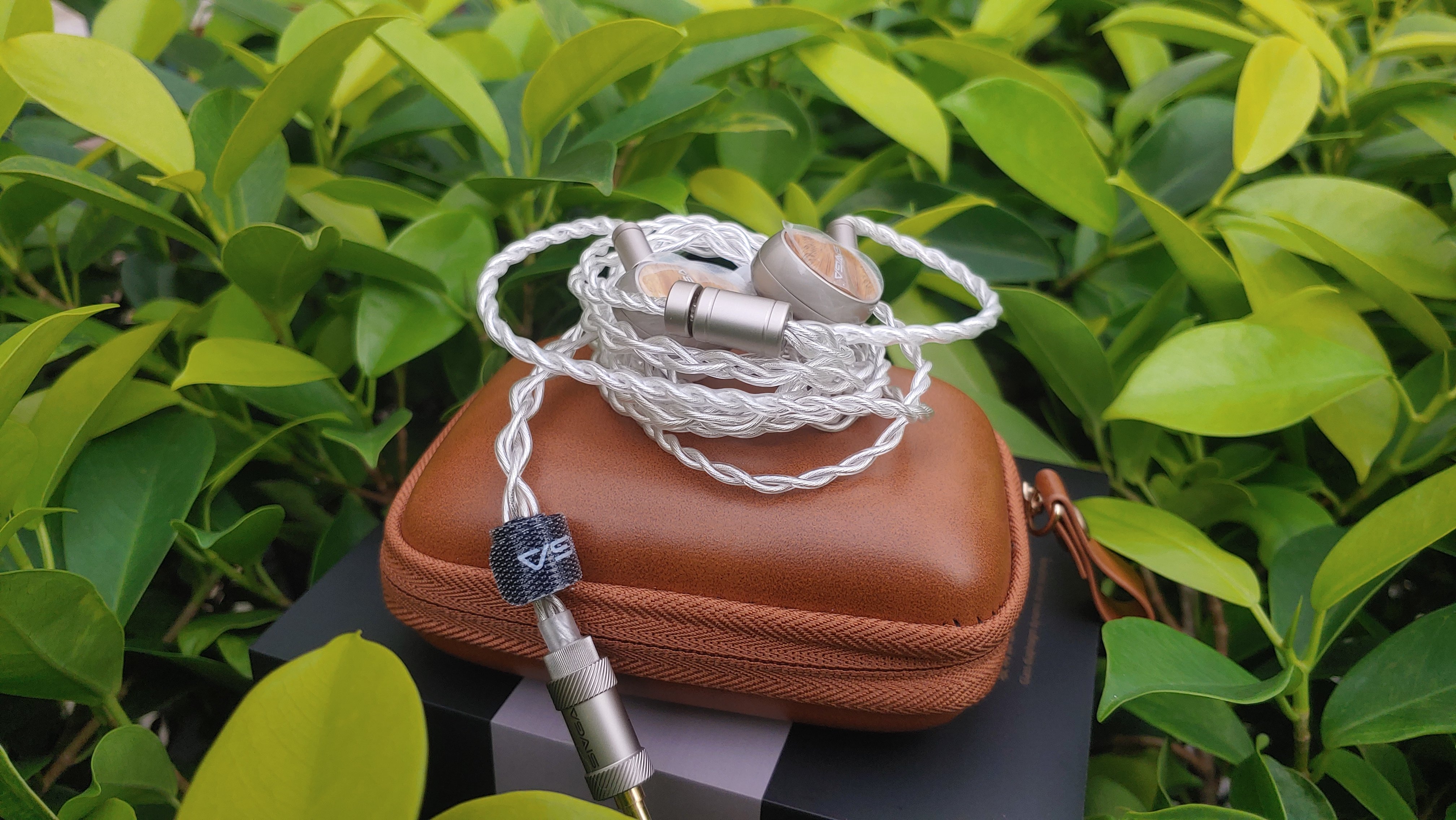
SPECIFICATION:
MODEL: SIVGA QUE UTG
IMPEDANCE: 32Ω
SENSITIVITY: 103dB
FREQUENCY RESPONSE: 20Hz – 20KHz
CABLE LENGTH: 1.25m
PIN TYPE: 0.78mm 2-PIN CONNECTOR
PLUG TYPE: (MODULAR) 3.5mm, 4.4mm
DRIVER UNIT(S): 1 DYNAMIC DRIVER
PROS:
● Solidly-built composite shell chassis.
● It uses sandalwood on its faceplate as woods are also known for their excellent acoustic properties.
● It offers comfortable wear and an excellent seal for better passive noise isolation.
● Fully-loaded with accessories in its packaging box.
● Inclusion of a high quality stock cable and also, it features a termination plug.
● Pretty easy to drive.
● It has a mild U-shaped sound signature as it signifies a mature tuning of this set.
● Clear sub bass presence
● Incisive, tight and clean bass response
● Clear, vivid and energetic midrange presentation.
● Crisp, vibrant and sustaining sounds on strings
● Expressive and open sounding female vocals.
● Delicate and airy sounds on woodwinds.
● Bright and well-defined treble response with a good amount of air on it.
● Fairly roomy head stage with a fairly layered soundscape.
● Good detail retrieval.
CONS:
● Noticeably a bit recessed midrange presentation.
● A bit leaner and less warmth tonal profile compared to the original Que.
● Instances of dry, piercing and tinny sound
● Its tuning might be a bit intense to some treble-sensitive folk.
● Might be too sterile sounding to some listeners who tend to prefer more musical, fun and coloured tuning.
TRACKS TESTED: ( * = 16-bit FLAC, ** = 24-bit FLAC, *'* = MQA, '*' = DSD, *'= .WAV)
Alison Krauss -When You Say Nothing At All *
Jade Wiedlin - Blue Kiss**
Led Zeppelin - When The Levee Breaks **
Mountain - Mississippi Queen *
Queen - Killer Queen **
Guns N' Roses - Patience *'*
Eric Clapton - Tears in Heaven '*'
Sergio Mendes- Never Gonna Let You Go '*'
Pearl Jam - Daughter **
Roselia - Hidamari Rhodonite *
Assassin - Fight (To Stop The Tyranny)*
Celtic Frost- Visual Aggression *
New Order - Blue Monday *
The Corrs- What Can I do (unplugged version) *
Jimi Hendrix Experience - Voodoo Child *
The Madness- Buggy Trousers *
Metallica - Motorbreath **
Mariah Carey- Always Be My Baby *
Destiny's Child - Say My Name *
Malice Mizer- Au Revoir *
Mozart - Lacrimosa *
New York Philharmonic Orchestra - Dvorak- Symphony 9 " From the New World." *
Eva Cassidy - Fields of Gold (Sting cover)*
Michael Jackson - Give In To Me *
Exciter - Violence and Force *
Diana Krall - Stop This World **
Debbie Gibson - Foolish Beat *'*
The Sisters of Mercy – Lucretia My Reflection**
Suzanne Vega – Luka **
Lauren Christy – Steep *
Ottoman Mehter - Hucum Marsi *
Diana Damrau - Mozart: Die Zauberflöte*
Type O Negative - Black No.1 *
Felix Ayo - Vivaldi: Presto **
Three Tenors - Nessum Dorma *
Mercyful Fate - Witches' Dance *
P.S.
I am not affiliated to SIVGA AUDIO nor receive monetary incentives and financial gains as they provide me a review unit for an exchange of factual and sincere feedback from yours truly.
Once again, I would like to send my gratitude to MR. COLLIN YANG for providing this review unit. I truly appreciate their generosity and trust towards me and other reviewers.
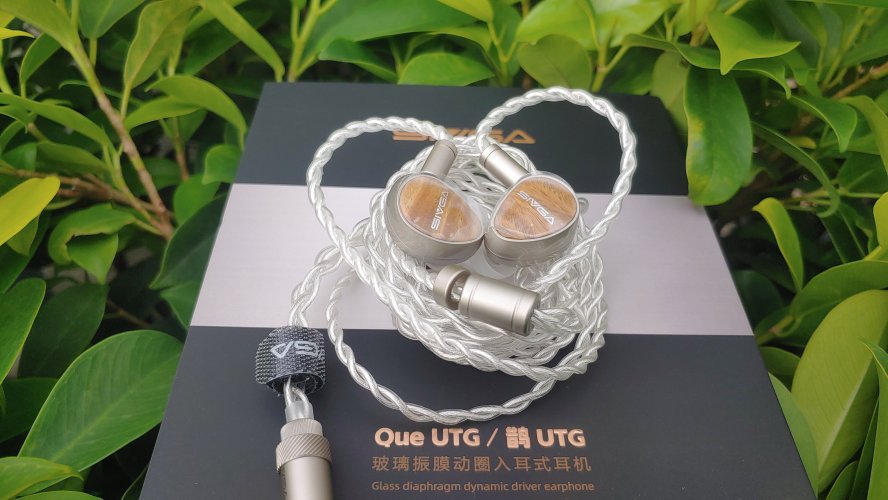
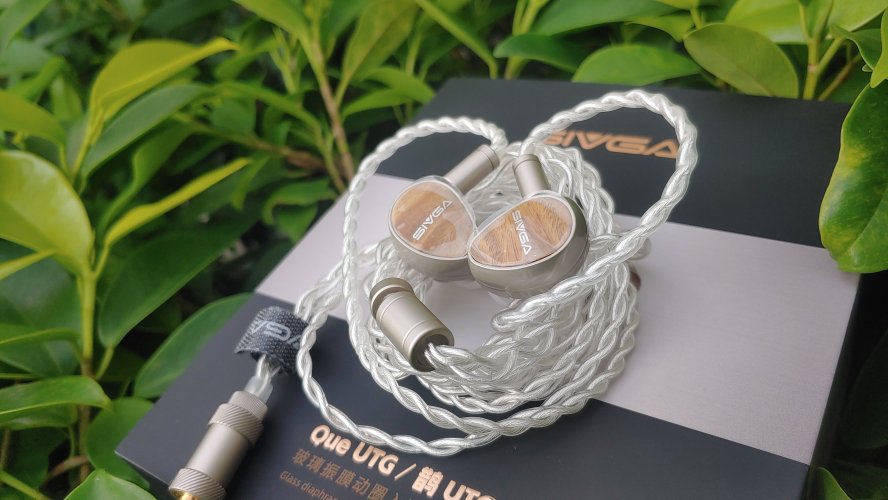
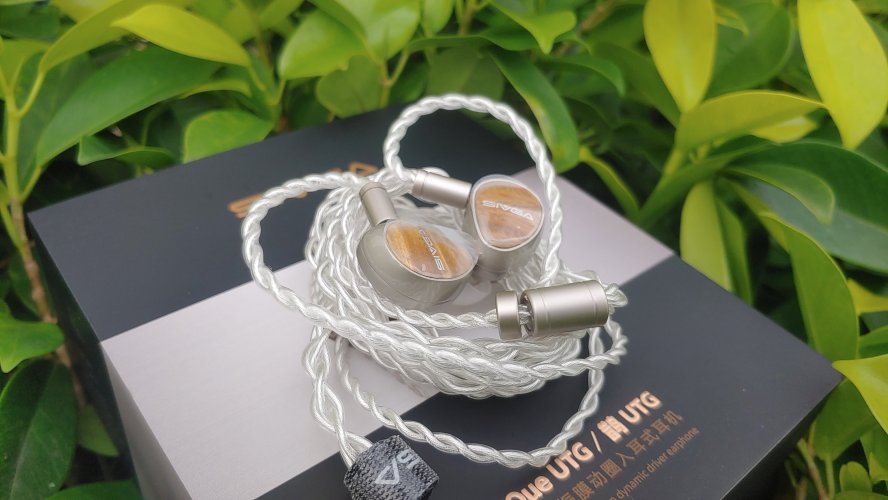
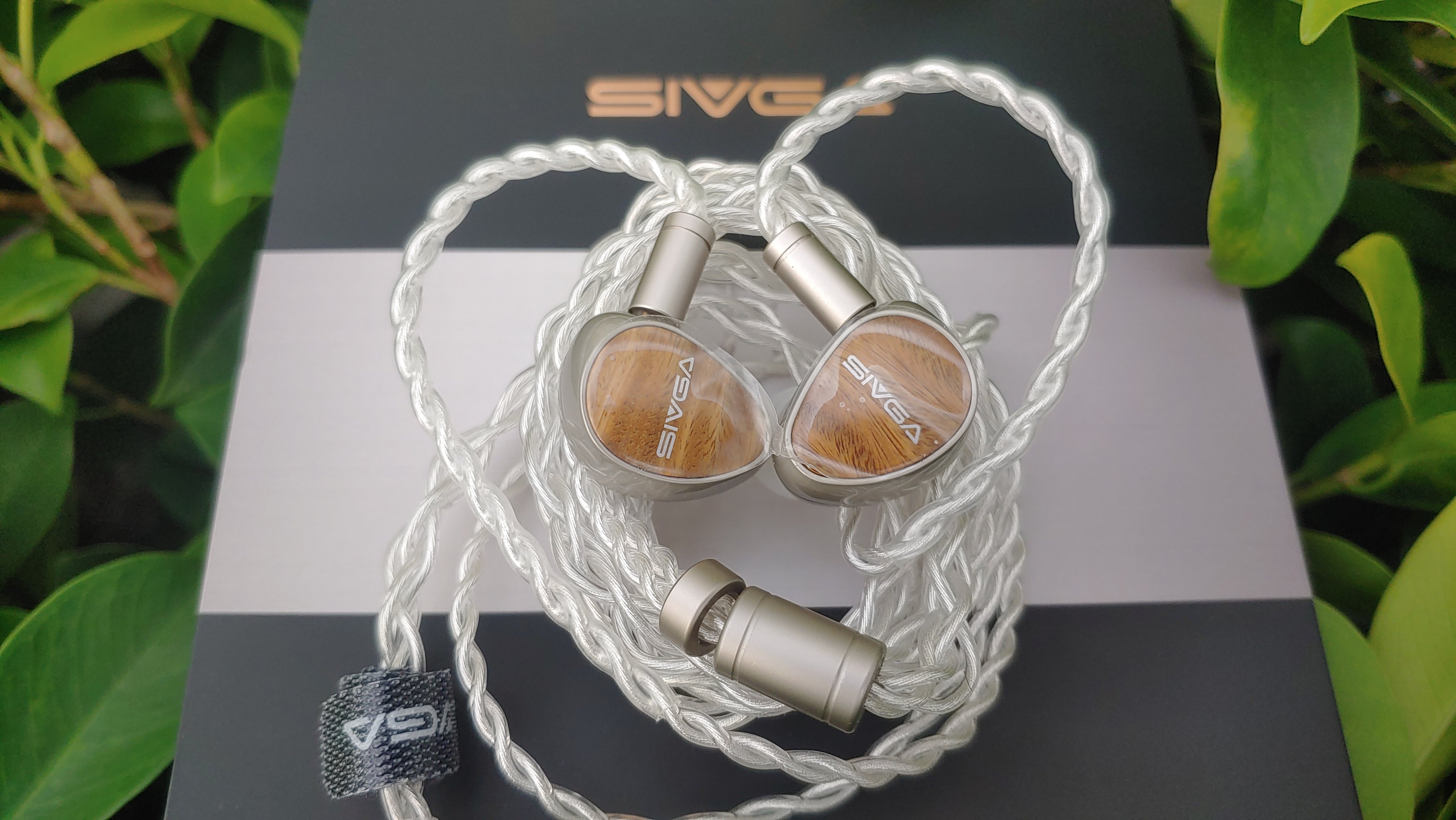
Comments
Post a Comment